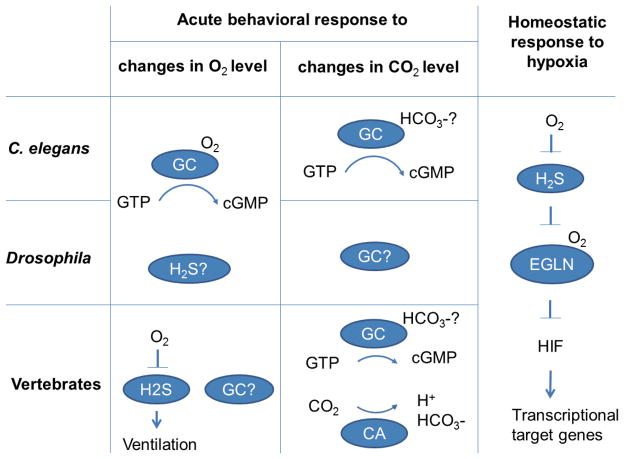Figure 1. Schematic molecular mechanisms of sensing O2 or CO2 to direct acute behavioral or homeostatic responses in C. elegans, D. melanogaster and vertebrates.
In both C. elegans and Drosophila, changes in O2 levels directs acute behavioral responses mediated by atypical nucleotide guanylate cyclases (GCs). GCs can bind O2, which regulates the enzymatic activity of GCs to convert GTP to cyclic GMP. In vertebrates, sensing reduction in O2 levels directs ventilation responses in the carotid body by altering the H2S level, which increases upon hypoxia. There are also acute behaviors that require mechanisms independently of cyclic nucleotides in C. elegans and it remains unknown whether vertebrates also use GCs to modulate ventilation. Sensing changes in CO2 levels in both C. elegans and vertebrates appears to be mainly mediated by GCs and/or adenylate cyclases; whether this is also the case in Drosophila remains to be seen. The perception of carbonation in mammals uses pH-sensing mechanisms via carbonic anhydrase (CA)-generated protons. In all animal species examined so far, an evolutionarily conserved transcriptional pathway mediates the homeostatic response to hypoxia. The O2-sensing hydroxylase EGLN family proteins is modulated by the antagonizing actions of O2 and H2S to inhibit HIF transcription factors, which ultimately direct adaptive responses to hypoxia by the transcriptional regulation of its numerous target genes.

